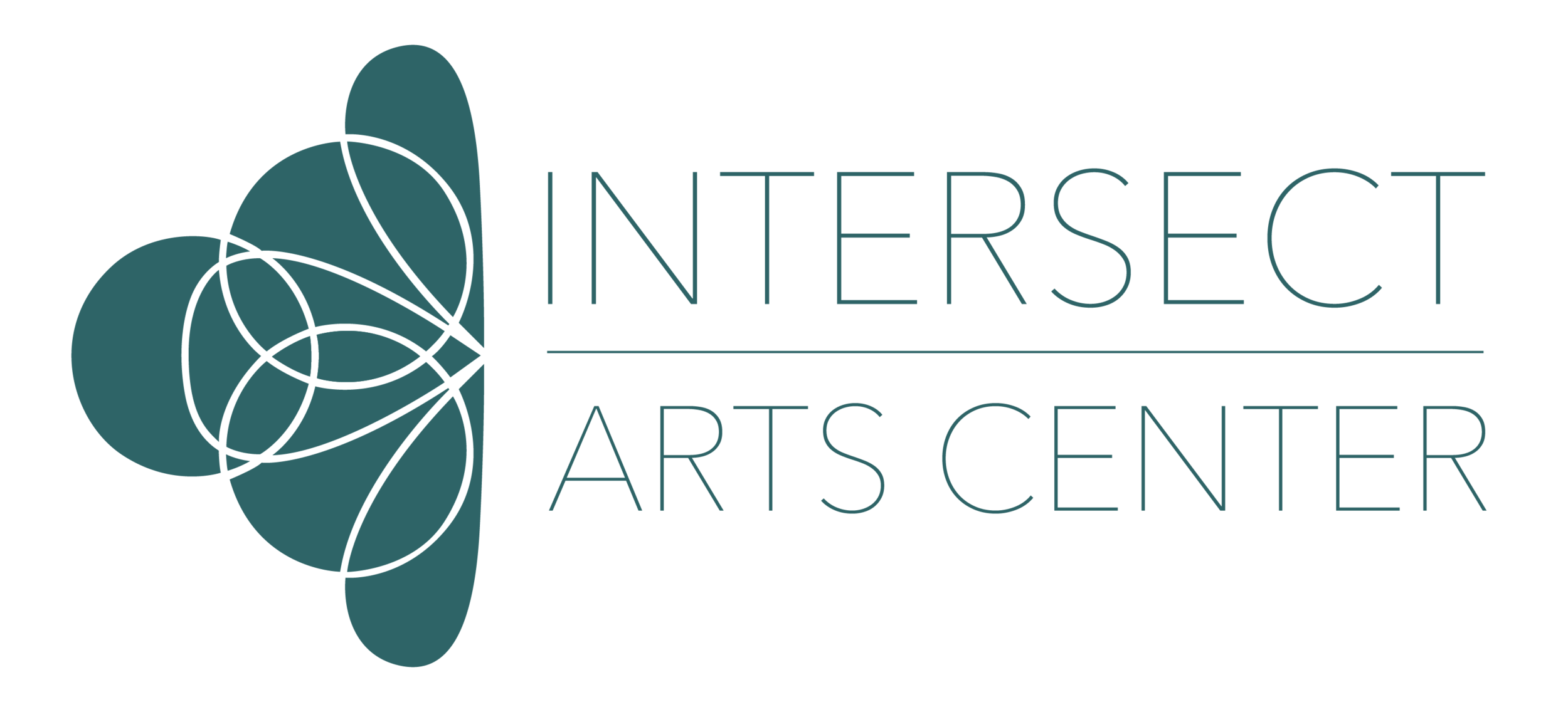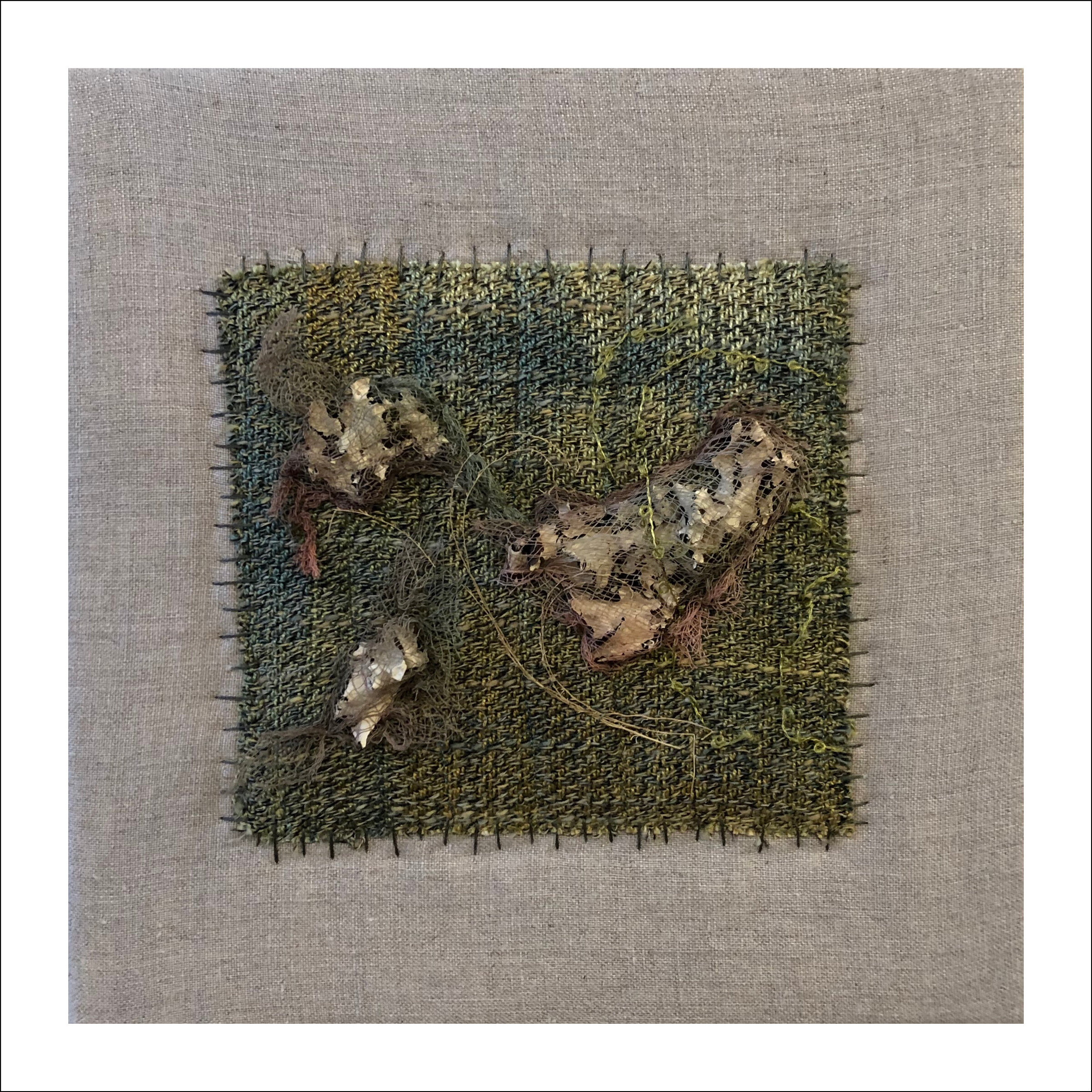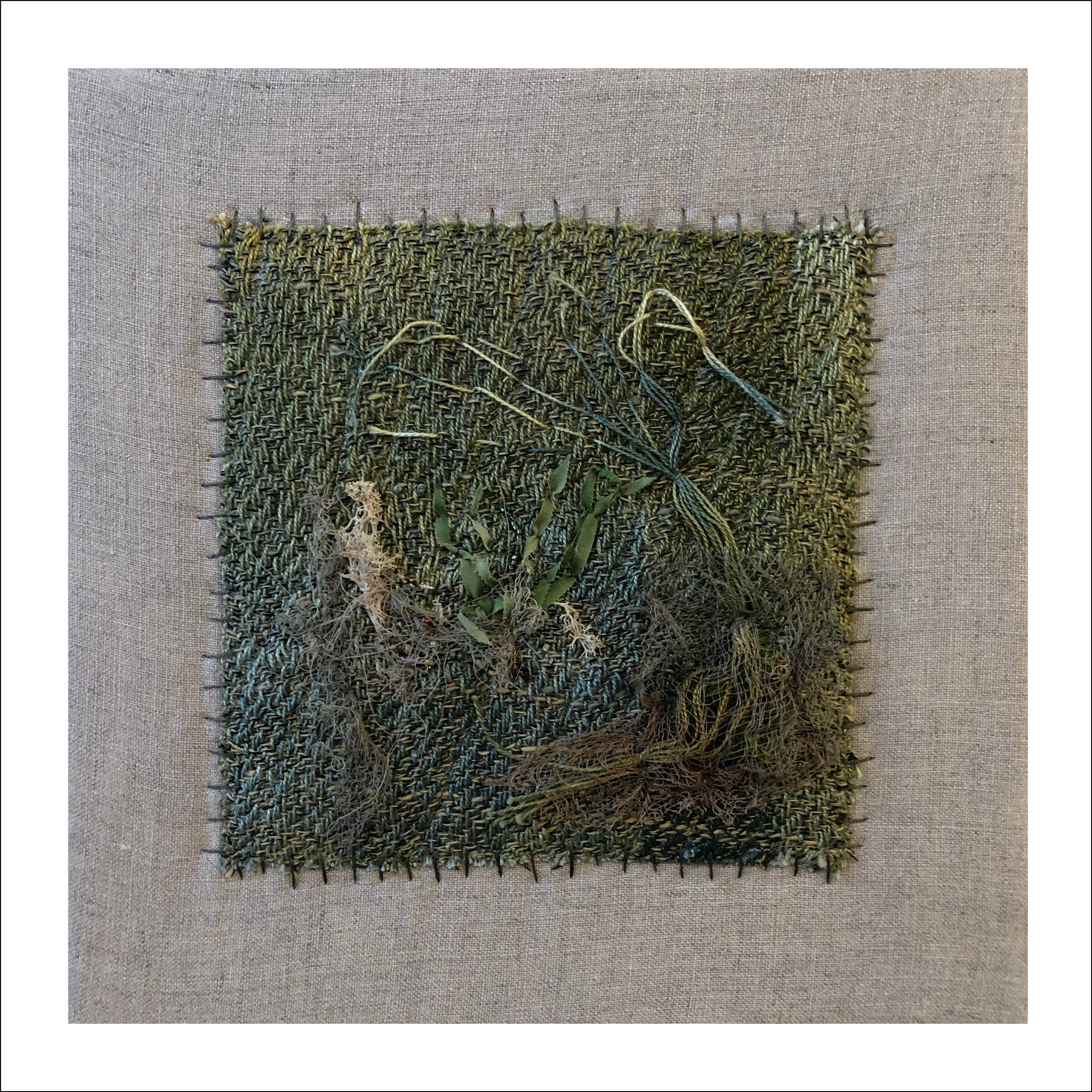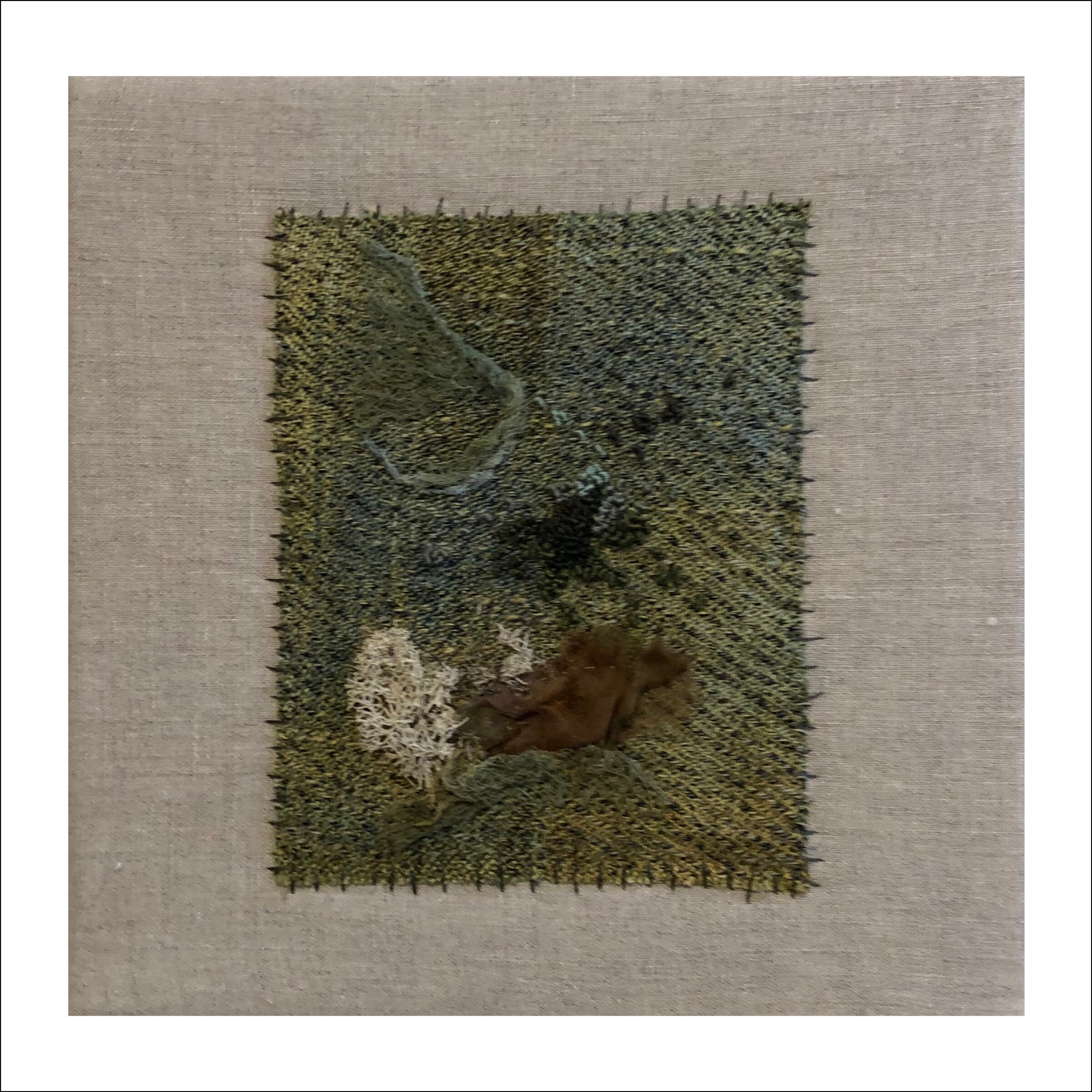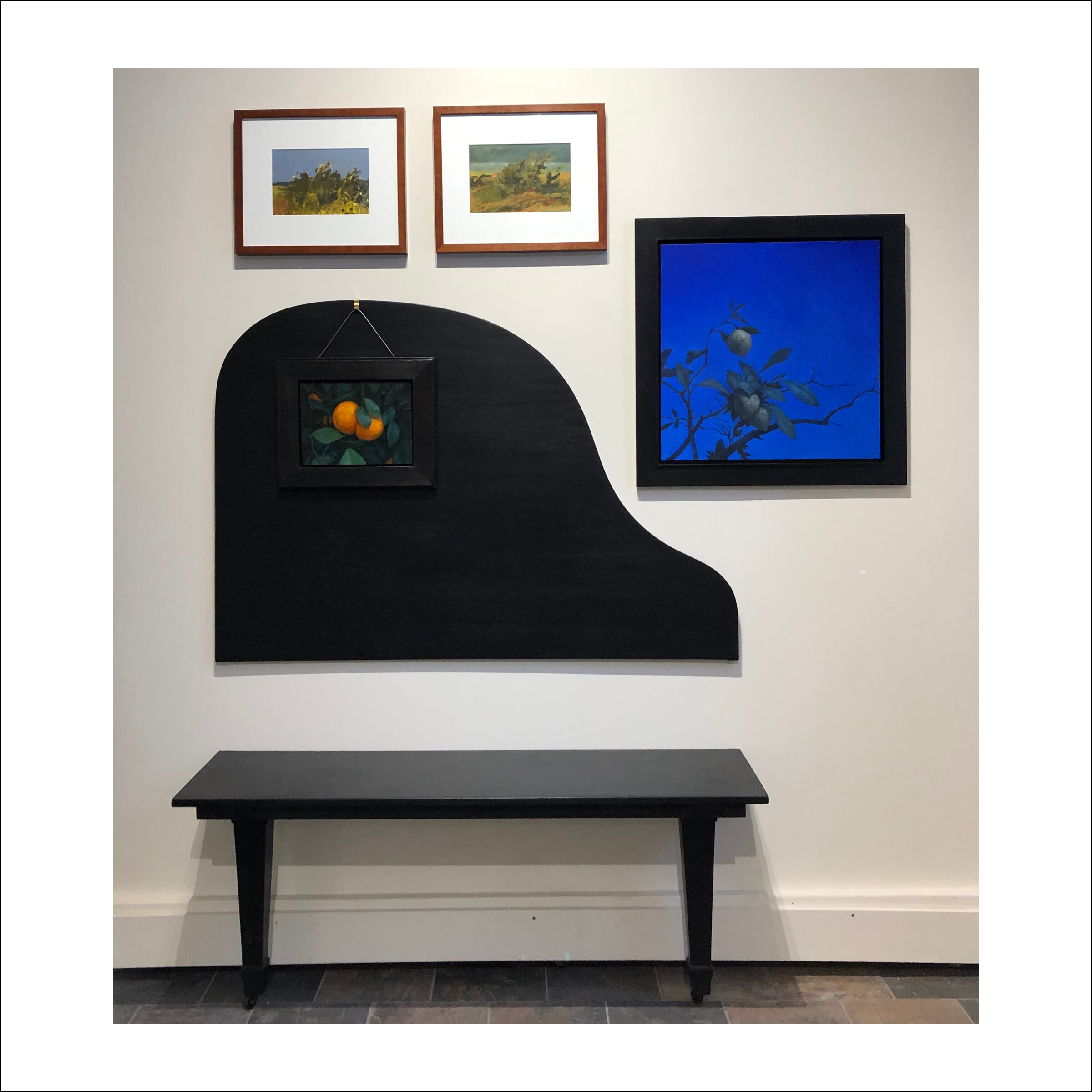LAYERED PLACE
FEBRUARY 9 - APRIL 19, 2019
Curated by Charis Norell
The traditional landscape painting often contains a horizon line, recognizable landforms, and an idealized representation of Nature. Looking deeper, the historic use of the landscape mirrors the inner-state of that society's relationship to the political, religious, economic, and natural world around it. "Layered Place" invites viewers to reevaluate their definition of landscape, and consider the multiple "layers" of the multi-faceted modern landscape. This group exhibition delves into humanity's tumultuous relationship with Nature, visual metaphors for Place, social and cultural identity, family heritage, and way-finding.
3. Respite Sequence : Jenna Bauer
6. Kitty White : Song Park
4. Gathering (Series) : Mandy Pedigo
7. conservatory : John Sarra
1. Water Cuts : Meghan Grubb
4. Gathering (Series) : Mandy Pedigo
4. Gathering (Series) : Mandy Pedigo
5. Checker-up! : Jon Young
6. bad kitty : Song Park
4. Gathering (Series) : Mandy Pedigo
2. Untitled (anti) Landscape : Allana Ross
Layered Place Catalog
On “Layered Place:”
Notes From the Curator
“All places are small worlds: the sense of the world, however,
may be called forth by art....”
Yi-Fu Tuan, Space and Place (1)
In planning this show, I often asked myself what constitutes “Place.” Is a place merely a physical “spot” in the surrounding landscape? Are places simply locations we visit, dwell in, vacation at, or return to? Could places be more than landmarks and points of reference? I began to think of the concept of Place as a state of mind--an element of our psyche. But if this is true, does Place then become a timeline-point of lived experience; a memory, a fiction? Yes. Yes to all and yes to none of the above. In each of the works selected for “Layered Place” lies an element of Place. Each artist, in their own way of wandering and wondering through making, presents a layer of Place and its irrevocable connection to being human.
I think certain places earn a capital “P.” For example, I could visit many places, but there is no Place like a home. Home is one of those capital-“p” Places. Home holds more than a physical dwelling place--even the word “home” itself cues certain sets of emotions to mind. Philosopher Dylan Trigg writes, “In a word, the places in which we live, live in us.” (2) Trigg tells of the role memory plays in ingraining a location into the mind. The physical place might weather, change, or disappear. Yet, in our memories of our experiences in that place, it remains “untouched,” and continues long after the physical place itself has changed. In a sense, Places are fictions we create; a for-better-or-worse “topia” within our minds. If Place can live inside of me through my memories, perhaps the place now becomes an irreplaceable part of my own experience of my identity in the world around me.
I am thrilled to have you join us at the Intersect Arts Center. As you walk through this exhibition, I invite you to listen and consider what layers of Place each work might be sharing.
————
(1) Tuan, Yi-Fu. Space and Place: The Perspective of Experience. Minneapolis: University of Minnesota Press, 1977, p. 421
(2) Trigg, Dylan. The Memory of Place: a Phenomenology of the Uncanny. Athens, Ohio: Ohio University Press, 2012, p 33.
Works:
3. Jenna Bauer | Respite Sequence (8 x 10, 4) | Oil on Canvas | 8” x 10” | 2018
“The Respite Sequence is a multidisciplinary body of work I’ve embarked upon since returning to St. Louis in 2014 to support my father after his ALS diagnosis. The interconnected nature of reality is implied in the surface of these paintings. They are meditations on the infinite number of things happening at once in our world that are inevitably intertwined. The paintings also exist to suggest the idea of pure landscape as devotional space. The essence of lush, bucolic landscapes provide aesthetic respite from a complicated world.”
1. Meghan Grubb | Water Cuts | Plaster, fabric, string, wood. | Dimensions variable | 2019
“As a product of an ongoing exploration between bodies and water – and the linguistic metaphors that link the two – the series water cuts imagines water-based landscapes in bodily terms. Heavy, fluid, saggy, soft and yet solid, the sculptural forms indicate the physical body and imply both violence and ownership, as if they are cuts of meat to be processed and purchased.
The water cuts originate from images of water found within, and carefully cut from, various newspapers published throughout 2017 and 2018. Each image is removed from its editorial context – place, time and human connection. Ranging from floods, to rivers, salt flats, algae blooms, luxury vacation destinations, fisheries, and glacial melt-waters, the original images in context suggest a complex and increasingly fraught relationship between humans and water-based landscapes. Out of context, printed on fabric, full and heavy, as bodies of water, the water cuts blur distinctions between the physical environment and are own human bodies.”
6. Song Park | Ophelia | Oil on Linen | 5’ x 6’ | 2017
bad kitty | Mixed Media | 30’’ x 40’’ | 2019
Kitty White | Mixed Media | 30” x 40” | 2019
“In Ophelia, I explored the process of seeking the interwoven images of woman framed by a woman’s gaze. In my work, with my body as a primary medium, I continuously create disorder within forms, and it eventually creates a female character in the psychedelic woods that represents my constraints of searching for images of women as a woman. The character undergo metamorphosis in the woods, creating repulsive images; yet, simultaneously, they adore, embrace, and liberate their own image. I also find myself torn between disgust for and celebration of these images. I blur the line between the gender stereotypes that determine which female body image is acceptable and which is taboo, thus, finding my own interpretation of images of female potential.
In Kitty White and Bad Kitty, I explored the gesture of materials by using objects that represents the stereotyped quality of femininity such as beads, artificial flowers rhinestones, fabric trims, and hello kitty resin charms. They are “seeded” in the ground of the painting which represents the “female body”. As the materials arranged/overgrown chaotically on the body, they lose their own gesture such as soft and precious, to create newly repulsive image such as disorder and cacophony, in turn, asking us to consider the fraught psychological and emotional landscape that is proposed to be inhabited by the female body.”
4. Mandy Pedigo | Gathering (Series) | Dried lichen, handwoven fabric, glass beads, linen, cotton, rayon and mixed fibers. | 10” x 10” | 2017
“My great grandparents came to this country from Finland, and in the span of one generation much of their culture and language faded from my family. Even in the effort to assimilate to American culture, traces of heritage remained to be handed down. Through the process of my making, I’ve realized this knowledge has passed unexpressed to me.
Researcher Pauline Boss studies the effects of immigration on families and the loss that results when one leaves home to travel and settle in a new place. She writes, “Homesickness was an essential part of my family’s culture. I think it may be true for all immigrant families, but it certainly was for mine. And it was even in the village because there were many immigrant families there.”
Much of my work functions as maps; maps tell us how to get to our destinations, describes the details of a particular place and how to orient ourselves to our surroundings. Maps evolve in response to changes to place, terrain and land use. Like maps, our memories change over time; the image we retain of a location seldom matches its actual character. The Finns have deep cultural connections with nature. It is no wonder that my family came to America and settled in an area that resembles Finland in many ways. My family carried a surname that translates from Finnish as “the land endures.” The work that I create echoes my family’s historic bond with land as well as the new ones I have formed in experiencing different places.
As weaving and stitching are all naturally slow processes, my work engages time. Working slowly is a direct opposite to the pace of our present culture. Slow allows for quiet, time to think, to meditate and to fully engage with tasks and ideas.”
2. Allana Ross | Untitled (anti) Landscape | Silk, wood, thread, dyes extracted from plants grown in contaminated soils, plant matter, American Bottom-grown corn, beaver-gnawed stick from Coldwater Creek, Southern Illinois coal, pen and ink, acrylic, photos of: West Lake Landfill, Weldon Spring Mound, Granite City Steel, Coldwater Creek, and Monk’s Mound. | Dimensions variable | 2019
“When Charles Dickens toured the Mississippi Valley he called it a “dismal swamp...a hotbed of disease, an ugly sepulchre, a grave by any gleam of promise: a place without one single quality, in earth, air, or water, to commend it.” (1) Even then, due to environmental exploitation—especially excessive logging to fuel steamboats—the Mississippi floodplain had become an anti-landscape, inhospitable to settlement and human life.
Today’s post-industrial environment is rife with “anti-landscapes,” a legacy of the dichotomy that casts nature as separate from humanity. An anti-landscape is a place that does not sustain life— while anti-landscapes can occur naturally, in the Saint Louis area, they are a consequence of human industry. David Nye defines landscapes as “humanly modified places where people live.” He posits that an anti-landscape is landscape’s inversion: “An anti-landscape is a man-modified space that once served as infrastructure for collective existence but that has ceased to do so.” (2) An anti-landscape gives expression to a new sense of environment. It is the echo of a productive, exploited place, an abandoned history. The story of our relationship to the physical environment is inscribed in the landscape: we have rendered it an inverse of itself.
So now what? We live at the confluence of three great rivers in a world facing a water crisis, but our soil is lifeless, compacted, contaminated, unproductive, unfit for growing edibles. What do we do with an anti-landscape? How do we re-implement infrastructure that supports collective existence? How do we come to recognize our dependence upon the physical environment?
Agriculture is more than food. Agriculture is a transaction between ourselves and the dirt. Pigment plants reestablish lost connections between ourselves and our neglected surroundings. Maintenance forges a relationship we forgot. Indigo and coreopsis thrive in gardens installed in post-industrial sites. They are processed into dyes, used in public workshops, and are maintained in acts that re-activate the anti-landscape, establishing infrastructure and maintenance relationships that render the land productive. What do we do with an anti-landscape? Learn from it, re-establish it as a landscape, and fall in love with the maintenance a relationship of interdependence demands.”
————
(1) Norris, Terry F. “Deforestation in the Mississippi Valley,” in Common Fields: An Environmental History of St. Louis. St. Louis, MO: Missouri Historical Society Press, 1997, p. 85
(2) Nye, David E. and Sarah Elklund. The Anti-Landscape. New York, NY: Editions Rodopi B.V., 2014, pp. 11-12.
7. John Sarra | conservatory | Mixed Media | 84” x 60” x 14” | 2018
“The title of this piece, conservatory, hints at the study of music while also referring to rooms where plants are collected and preserved. The windows of the conservatory, like the plants themselves, speak to the desire to pull the outside inside.
This piece is meant to be seen from across the room as an object before being approached and scrutinized as imagery. Finally, it presents an invitation for a viewer to sit, to inhabit the work even as they turn their view away from it. And in that moment the work directs a viewer outward toward “the scenic” or inward towards “rest”. Recently, I’ve been thinking of observation and creation as forms of listening. And while listening holds hearing as its purpose, sound is not guaranteed. The apprehension of silence, then, can be taken as evidence of the creative act. That silence becomes a representative of faith, a transformation of nothingness into emptiness—that is, the void is placed within a container and becomes fathomable without losing its immensity.”
5. Jon Young | Checker-up! | Saddle, Flocking, Iridescent Fabric, Sand, Wood | 8’ x 8’ x 4’ | 2018
“My practice centers around the development of language, visual symbols, and signage. In investigating these aspects, I appropriate symbols from various points in history; looking back to Paleolithic cave paintings and Greek pottery to contemplate visual language as well as pulling symbols from recent culture such as the line in the sand found in Western films and cartoons.
Using the American West as a backdrop, I ground the position of these works in histories and mythologies of new frontiers. The work stems from my personal experience of continuous travel that came with being a child of a military family and reflects on the cultural displacement of my Native American identity. I use textiles, sand collected from significant places of my nomadic life, and the languages of the “Arte Povera” movement to create works that act as signs to become points of orientation in an ever-shifting sense of place and time.”
My current work is an extension of a series of works that I began in 2016 entitled “Waymark Margins”. The iridescent fabric performs similarly to hallucinations in a desert; visible yet elusive, like a hologram. They flicker, shift, and move as the viewer changes their orientation to the work. The embossed pillowy surface of these works not only reaches out to the viewer, but also have reflective properties that create a disorienting sense of space within them. I repeat these disorienting signs to give a viewer recurring moments to consider their orientation among them.
